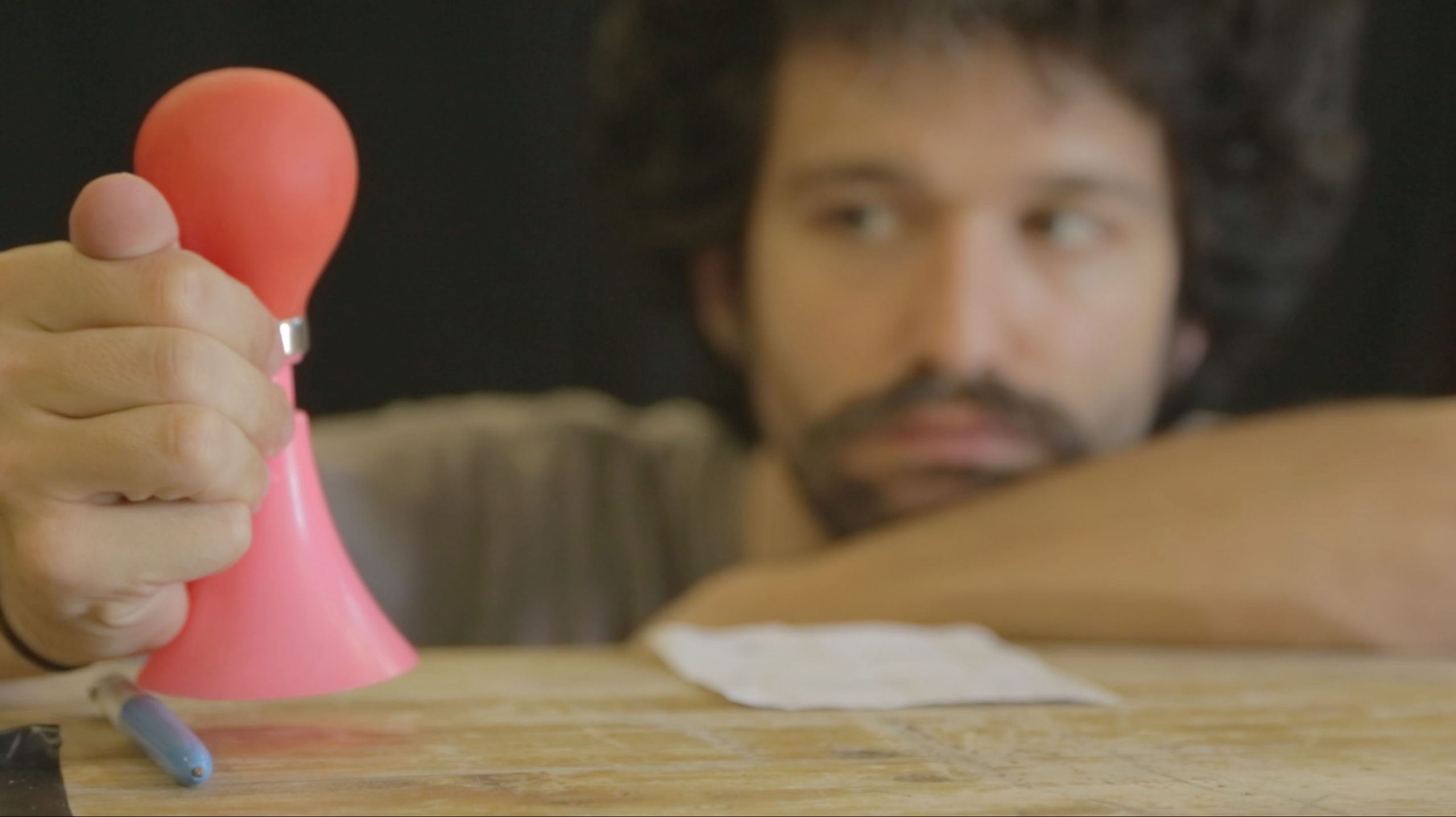ONLINE MIME COURSES

These courses are carefully conceived to make you learn basic mime techniques at home, anywhere in the world.
We know that a video can’t replace the pysical presence of a teacher in the flesh, or even the relationships and collaboration with other students.
However, online courses have the great possibility to worldwidely diffuse Mime culture, giving you a full curriculum even if there is no good mime courses near you.
They are useful if you want to have an idea of what mime is and can become in your hands, or if you want to practice and review something you already learned.
These course are led in English with Italian subtitles. They are hosted on the e-learning platform Udemy.
AVAILABLE COURSES:
All the online courses will be activated very soon. Keep in touch!
COURSES IN PREPARATION:
(click on titles to expand)
MIME ART: Drawing the Invisible (Basic Course)
24 short classes to learn basic techniques and principles to draw objects and surfaces, to imitate the world by using only your body and gestures.
It is a way to get the secrets of the trade and to know what is mime, and what it could become in your hands!
CURRICULUM:
SECTION 1 – Introduction
01 – Course Overview
02 – General Introduction to Mime Art
03 – Basic Warm Up & Training
SECTION 2 – Drawing the Invisible
04 – Let’s start to play: the ball
05 – Secrets of the Art of Invisible
06 – Basic Solids & Shapes
07 – Props: Sticks
08 – Props: Doors and Windows
09 – Props: Reading & Writing
10 – Props: Clothes
11 – Solid surfaces
12 – The wall
13 – Fixed Point Technique
14 – Multiple Objects: the Reference System
SECTION 3 – Properties of invisible ojects
15 – Weight and Lightness
16 – Hardness and Softness
17 – Transitive Properties
SECTION 4 – Seeing the Invisible: elements of Perception Theory
18 – The Gestalt Theory: models of perception
19 – Practical implications + examples
20 – Imitating Reality: the Mimesis
21 – Mime Styles
SECTION 5 – Conclusions
22 – Inspirations
23 – Conclusions about the Basic Course
EXTRA CONTENTS
24 – Cool morning routine
MIME ART: Drawing Beyond (Intermediate level)
In this intermediate level you will get other fundamental principles and techniques: the use of the space (and how it can be me moved by the mime), the use of sounds and music, which can be very useful. You will also learn the “Objective Mime” technique, to increase expressive possibilities for a gestural speechless storytelling.
CURRICULUM:
SECTION 1 – Introduction
01 – Course Overview
SECTION 2 – The Invisible Space
02 – Drawing ambients
03 – Walk in Place (frontal version)
04 – Walk in Place (lateral version)
05 – Lateral Sliding
06 – Moving IN space – Moving THE space
SECTION 2 – Sounds
07 – Section Overview
08 – Using self-emitted Sounds
09 – Using Recorded Sounds
10 – Working with music
11 – Soundtrack Editing VS Live Sound
12 – Soundplant: a quick overview
13 – Playback
14 – Mime & Speech (can we?!)
SECTION 3 – Augmented Drawing: The “Objective Mime” Technique
15 – Section Overview
16 – Drawing outside my body
17 – Drawing far from me
18 – Drawing another character
19 – Multiple Characters
20 – Gestural Narration
SECTION 4 – Conclusions
21 – Inspirations
22 – Conclusions about the Intermediate Course
MIME ART: Slow Motion, Robots and Unpredictable Objects (Advanced level)
The third level is about going beyond reality. It corresponds to part of the second year of the professional course.
CURRICULUM:
SECTION 1 – Introduction
01 – Course Overview
SECTION 2 – Slow Motion
02 – Section Overview
03 – Basic Skills
04 – Slow Walking
05 – Turning Back
06 – Composite Actions: Fighting
07 – How and when to use the Slow Motion
08 – Secondary Actions
SECTION 3 – Automatons
09 – Section Overview
10 – Classic Robot
11 – Modern Robot
12 – String Puppet
SECTION 4 – Mime + Real Objects
13 – Section Overview
14 – Fixed Point 1: The balloon
15 – Fixed Point 2: The suitcase
16 – Weight
17 – Levitation
18 – Anarchic Movements of the Object
19 – Inexorable Movement
20 – Acting with Objects
21 – Using other Objects
SECTION 5 – Conclusions
22 – Inspirations
23 – Final conclusions
More informations?
These courses are carefully conceived to make you learn basic mime techniques at home, anywhere in the world.
We know that a video can’t replace the pysical presence of a teacher in the flesh, or even the relationships and collaboration with other students.
However, online courses have the great possibility to worldwidely diffuse Mime culture, giving you a full curriculum even if there is no good mime courses near you.
They are useful if you want to have an idea of what mime is and can become in your hands, or if you want to practice and review something you already learned.
These course are led in English with Italian subtitles. They are hosted on the e-learning platform Udemy.
AVAILABLE COURSES:
All the online courses will be activated very soon. Keep in touch!
COURSES IN PREPARATION:
(click on titles to expand)
MIME ART: Drawing the Invisible (Basic Course)
24 short classes to learn basic techniques and principles to draw objects and surfaces, to imitate the world by using only your body and gestures.
It is a way to get the secrets of the trade and to know what is mime, and what it could become in your hands!
CURRICULUM:
SECTION 1 – Introduction
01 – Course Overview
02 – General Introduction to Mime Art
03 – Basic Warm Up & Training
SECTION 2 – Drawing the Invisible
04 – Let’s start to play: the ball
05 – Secrets of the Art of Invisible
06 – Basic Solids & Shapes
07 – Props: Sticks
08 – Props: Doors and Windows
09 – Props: Reading & Writing
10 – Props: Clothes
11 – Solid surfaces
12 – The wall
13 – Fixed Point Technique
14 – Multiple Objects: the Reference System
SECTION 3 – Properties of invisible ojects
15 – Weight and Lightness
16 – Hardness and Softness
17 – Transitive Properties
SECTION 4 – Seeing the Invisible: elements of Perception Theory
18 – The Gestalt Theory: models of perception
19 – Practical implications + examples
20 – Imitating Reality: the Mimesis
21 – Mime Styles
SECTION 5 – Conclusions
22 – Inspirations
23 – Conclusions about the Basic Course
EXTRA CONTENTS
24 – Cool morning routine
MIME ART: Drawing Beyond (Intermediate level)
In this intermediate level you will get other fundamental principles and techniques: the use of the space (and how it can be me moved by the mime), the use of sounds and music, which can be very useful. You will also learn the “Objective Mime” technique, to increase expressive possibilities for a gestural speechless storytelling.
CURRICULUM:
SECTION 1 – Introduction
01 – Course Overview
SECTION 2 – The Invisible Space
02 – Drawing ambients
03 – Walk in Place (frontal version)
04 – Walk in Place (lateral version)
05 – Lateral Sliding
06 – Moving IN space – Moving THE space
SECTION 2 – Sounds
07 – Section Overview
08 – Using self-emitted Sounds
09 – Using Recorded Sounds
10 – Working with music
11 – Soundtrack Editing VS Live Sound
12 – Soundplant: a quick overview
13 – Playback
14 – Mime & Speech (can we?!)
SECTION 3 – Augmented Drawing: The “Objective Mime” Technique
15 – Section Overview
16 – Drawing outside my body
17 – Drawing far from me
18 – Drawing another character
19 – Multiple Characters
20 – Gestural Narration
SECTION 4 – Conclusions
21 – Inspirations
22 – Conclusions about the Intermediate Course
MIME ART: Slow Motion, Robots and Unpredictable Objects (Advanced level)
The third level is about going beyond reality. It corresponds to part of the second year of the professional course.
CURRICULUM:
SECTION 1 – Introduction
01 – Course Overview
SECTION 2 – Slow Motion
02 – Section Overview
03 – Basic Skills
04 – Slow Walking
05 – Turning Back
06 – Composite Actions: Fighting
07 – How and when to use the Slow Motion
08 – Secondary Actions
SECTION 3 – Automatons
09 – Section Overview
10 – Classic Robot
11 – Modern Robot
12 – String Puppet
SECTION 4 – Mime + Real Objects
13 – Section Overview
14 – Fixed Point 1: The balloon
15 – Fixed Point 2: The suitcase
16 – Weight
17 – Levitation
18 – Anarchic Movements of the Object
19 – Inexorable Movement
20 – Acting with Objects
21 – Using other Objects
SECTION 5 – Conclusions
22 – Inspirations
23 – Final conclusions


